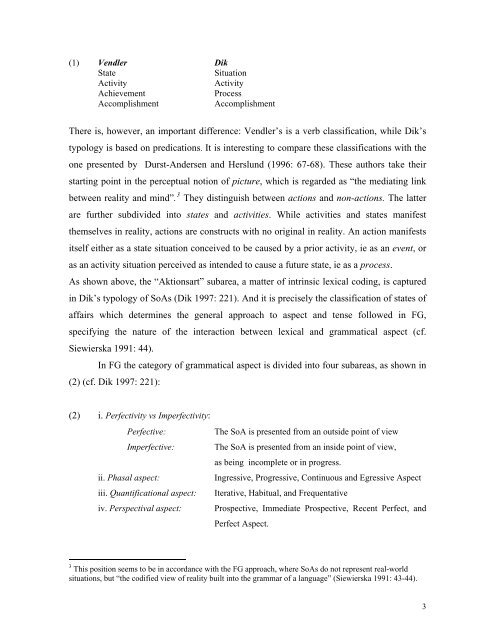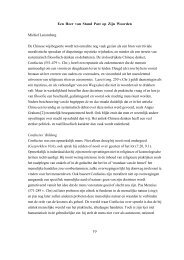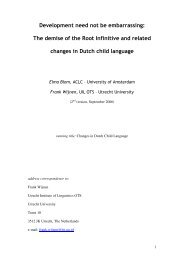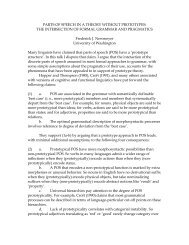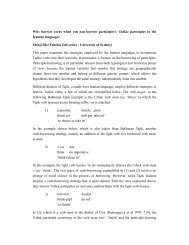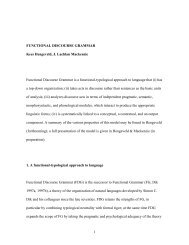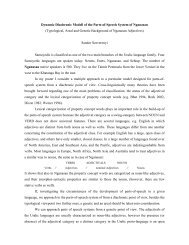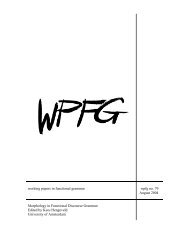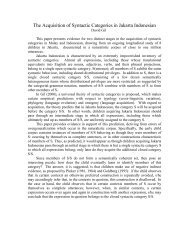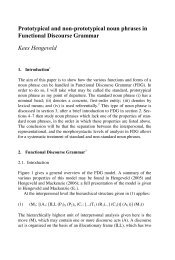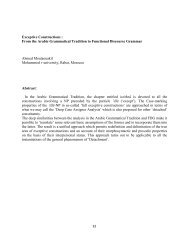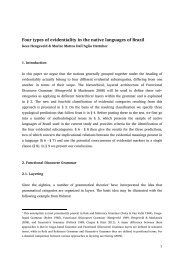Reconsidering aspectuality: interrelations between grammatical
Reconsidering aspectuality: interrelations between grammatical
Reconsidering aspectuality: interrelations between grammatical
Create successful ePaper yourself
Turn your PDF publications into a flip-book with our unique Google optimized e-Paper software.
(1) Vendler Dik<br />
State Situation<br />
Activity Activity<br />
Achievement Process<br />
Accomplishment Accomplishment<br />
There is, however, an important difference: Vendler’s is a verb classification, while Dik’s<br />
typology is based on predications. It is interesting to compare these classifications with the<br />
one presented by Durst-Andersen and Herslund (1996: 67-68). These authors take their<br />
starting point in the perceptual notion of picture, which is regarded as “the mediating link<br />
<strong>between</strong> reality and mind”. 3 They distinguish <strong>between</strong> actions and non-actions. The latter<br />
are further subdivided into states and activities. While activities and states manifest<br />
themselves in reality, actions are constructs with no original in reality. An action manifests<br />
itself either as a state situation conceived to be caused by a prior activity, ie as an event, or<br />
as an activity situation perceived as intended to cause a future state, ie as a process.<br />
As shown above, the “Aktionsart” subarea, a matter of intrinsic lexical coding, is captured<br />
in Dik’s typology of SoAs (Dik 1997: 221). And it is precisely the classification of states of<br />
affairs which determines the general approach to aspect and tense followed in FG,<br />
specifying the nature of the interaction <strong>between</strong> lexical and <strong>grammatical</strong> aspect (cf.<br />
Siewierska 1991: 44).<br />
In FG the category of <strong>grammatical</strong> aspect is divided into four subareas, as shown in<br />
(2) (cf. Dik 1997: 221):<br />
(2) i. Perfectivity vs Imperfectivity:<br />
Perfective: The SoA is presented from an outside point of view<br />
Imperfective: The SoA is presented from an inside point of view,<br />
as being incomplete or in progress.<br />
ii. Phasal aspect: Ingressive, Progressive, Continuous and Egressive Aspect<br />
iii. Quantificational aspect: Iterative, Habitual, and Frequentative<br />
iv. Perspectival aspect: Prospective, Immediate Prospective, Recent Perfect, and<br />
Perfect Aspect.<br />
3 This position seems to be in accordance with the FG approach, where SoAs do not represent real-world<br />
situations, but “the codified view of reality built into the grammar of a language” (Siewierska 1991: 43-44).<br />
3


